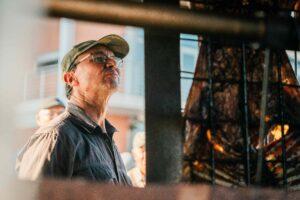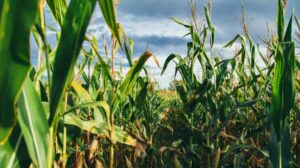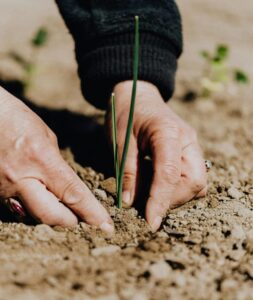Introduction
Permaculture is a system based on natural ecosystem processes: through consciously combining plant, animal, built environment and energy systems, it endeavours to create sustainable human habitats, settlements and agriculturally productive systems. The intention is to design productive systems that ultimately generate more energy than they consume, with no negative impact on the natural or social environment.
- Permaculture is a systems design response to the downward spiral into unsustainability that the world has been involved in for the last 150 years (at least). The name Permaculture is derived from “permanent”, “agriculture” and “culture”. Australian professor Bill Mollisson and his student Dave Holmgren coined this phrase in 1978, to describe their design framework for sustainable development.
- There are tens of thousands of Permaculturalists the world over who have implemented this design strategy, in a huge range of climates and contexts. The UN has recognised Permaculture as a useful intervention in areas that have experienced natural disasters, or post-war situations.
- Because it is a multidisciplinary approach, many techniques like Organics, Biodynamics and other agricultural practices are incorporated within its framework.
Permaculture systems do not use economic performance as the only measure of success. The “Ethics” and “principles” headings below will explain this further.
The content on this page is used courtesy of Alex Kruger of Permaculture Education Africa.
ETHICS
Permaculture is rooted in a set of ethics, which guide decisions that designers, agriculturalists and builders use in their daily activities. These ethics evolved out of the need to create behavioural and implementation patterns that would be beneficial to both the human and natural environment. Underpinning all of the ethics is the fundamental realisation that we are dependent on a planet that has limited, and damaged resources, and that we must work within this reality.
- Earth Care – all activities maintain the integrity of the natural resource base.
- People Care – all activities are aimed at empowering ourselves and other human beings, bearing Earth Care in mind
- Surplus Share – all extra resources are utilised to improve earth and People care.
- Set Limits To Consumption.
PRINCIPLES
Permaculture has basic design principles that one works from, in any context. One could call these sustainability guidelines. They are simple, practical and achievable.
- Work with rather than against Nature
- Relative location
- Efficient energy planning
- Every element must be multifunctional
- Every function should be served by many elements
- Use biological resources rather than non-renewables
- Create energy cycles
- Create diversity
- Patterns
- Increase the use of edge
- Make use of succession
- Intensity
Work with rather than against Nature
Working with nature means: observe and understand your context, as well as the larger factors which affect you. This is done through mapping, research into local ecologies, weather, investigation and talking to locals! Secondly, aim to enhance the resources you discover by working with the forces you encounter, and turning problems into solutions.
Relative location
Place elements in your system where they are most effective (elements are any component in your design: a house, a barn, cattle, gardens, extensive crops etc). By placing the elements where they are most needed, you reduce the amount of work and energy you have to expend. This principle also leads to creating relationships between design elements to enhance productivity and efficiency. A good example is using water from aquaculture ponds to irrigate food production areas.
Efficient energy planning
Every element in a Permaculture system should be placed where it functions most efficiently. This is known as Zone, Sector and Slope Planning.
Zone planning
Elements are placed in zones according to how many times you need to use and visit them, as well as the amount of inputs they require. Areas that need visiting every day for harvesting and maintenance (such as annual vegetable gardens, the nursery, chickens, recycling area, etc) must be placed near the house to facilitate easy access so that these systems are well observed and maintained. Places and systems visited less frequently are placed further away from the main centre of activity (orchards, staple food systems, woodlots, animal systems, etc) because these places require less attention and are harvested less frequently. The design is thus divided into Zones radiating outwards from the centre of activity.
- Zone 0 – House or business
- Zone 1 – Intensive vegetable gardens, nursery and small animal systems
- Zone 2 – An orchard or mixed food forest (perennial species); and staple food systems (grains and tubers).
- Zone 3 – This can incorporate large-scale semi-managed systems such as woodlots; large animal fodder systems and aquaculture.
- Zone 4 – Semi managed wild system of mainly indigenous species harvested for medicines, indigenous fruits and firewood.
- Zone 5 – Unmanaged wild systems of indigenous species that act as a refuge for wildlife and is a place we go to observe nature.
Slope planning
Slope planning involves looking at your site in profile, bearing in mind slope angles and elevation. This leads us to place dams, water storage tanks, roads and tracks, drains and flow diversions in the right place, so we might most effectively use slope on our land to our advantage. For example we place dams and water catchment above the house and garden so we may use gravity to create water flow instead of a mechanical pump. Slope planning means also that we use contours to garden on, to minimise erosion and maximise water retention.
Sector planning
Plan your site to make maximum use of energy moving through the site or to deflect those energies. Sector planning deals with “wild energies” that move onto the property from the outside. This means that our designs take into account fire danger; strong or damaging winds; screening of unwanted views; winter and summer sun angles; flood-prone areas etc. This leads to placement of homes, windbreaks, firebreaks, swales and water systems. Sectors also modify zonal placement.
Every element must be multifunctional
Every element selected should provide at least 3 functions: for example, windbreaks are pest predator refuges, a source of wild food and contain an herbaceous layer which also provides pest management.
Every function should be served by many elements
Pest control, soil fertility, water catchment and irrigation, mulch and food provision, etc … should must be served by more than one element. This means if one element fails in its task to provide a service (pest control chickens get eaten by a dog), then there must be back up by at least three other elements to ensure sustainability (plants, ducks and wild birds control pests). Observe this principle and the basic needs of your cultivated ecology will be met consistently from within the system.
Use biological resources rather than non-renewables
Use natural resources to do the work. Plants and animals are used wherever possible to provide nutrients, shelter, and fuel, insect and weed control, nutrient recycling, habitat enhancement, soil building, fire and erosion control, etc.
For example you can use chickens and small animals to work the soil and compost it; plant legumes to enrich the soil; encourage birds and use silky chickens for insect control; plant diverse systems to enhance nutrient reticulation in the soil and to keep disease and pests in balance; use deep rooting plants to loosen the soil instead of ploughing etc.
Create energy cycles
Any of the natural forces that enter a site must be put to work. If you have rain, ensure that it is not only caught on the roof for domestic consumption, but is re-used in the house, and enters a home garden as greywater to produce food. Overland flow needs to be captured in swales (contour ditches) so that it can slowly percolate into the soil, and eventually make its way to streams or rivers, rather than just rushing overland to the river. The same attitude is applied to any resources used on site to ensure that nothing is wasted, and no pollution is created.
Create diversity
Diversity brings choice and stability. Permaculture is about creating diversity, more so than in nature and it is through diversity that we have stability, choice and sustainability. Diversity not only ensures a wide range of plant species to use, it also means we get away from dependence on one crop for our livelihood (monoculture) into a system whereby a diverse range of plants and animals provide balance and fertility. Diversity means that a family/farm can satisfy many of its nutritional needs with the available fruits, vegetables, proteins, and minerals. Economically this means there is a wider variety of crops and products available at different times of the year, which protects the family/farm from market downturns, and the failure of one crop. But stability only occurs among co-operative species. Do not simply place as many varieties of plant and animal in your system, because they may compete with each other. It is the number of functional connections between these plants and animals that creates stability and fertility.
Patterns
When talking about patterns we refer to utilising forms like contour lines, spirals, branching patterns etc that occur in nature. This is not as esoteric as it sounds, but highly practical when correctly used.
Nature exists and grows through patterns. Use natural patterns that allow the parts of the design (animals, worms, birds, insects, soils, sun, water, etc.) to flow and work in beneficial relationships. Contours are an obvious form of patterning that can be effectively used on any scale of agriculture. Obviously these patterns become more simplified when used on a larger scale, but the principle still applies. Use the same patterning principles in your design when shaping beds, watercourses, building structures etc. The use of natural patterns in a garden will enhance the growth and vitality of the system and appear more interesting, original and beautiful.
Increase the use of edge
Edge is where two or more environments meet (for example land and water) and where the resources and energy of two or more systems available for us to use. Edge increases the surface interface in your gardens between different systems (pond/wetlands with veggie gardens) and there will be a high-energy movement between them and thus more opportunities in space and time. Also create as much surface interface for plants and animals to use (wavy shaped beds as opposed to straight ones), which will allow a greater amount of species to be placed into a smaller area effectively. Create more edge in your gardens and the energy in the ecology will flow with ease and vitality, ultimately creating a more productive system.
Make use of succession
Succession is a concept derived from ecology. It describes the evolution of plant and animal communities over time. Generally, when a site is disturbed, it is colonised by hardy weeds, which are short-lived, but provide a microclimate for other less hardy species to develop in. Left alone, these communities will increase in species diversity and longevity. With the increase in plant diversity, animal and insect communities also increase. Ultimately the system developes into a climax (stable) ecology suited to local conditions. In some areas this may be a forest ecology, in others a fynbos ecology. We utilise this successional phenomenon in Permaculture systems to create permanent agriculture systems. However, we will interfere by enhancing the system through using hardy pioneer shrubs and trees (especially legumes), thereby accelerating the development of a microclimate that will support productive crops.
Intensity
A primary consideration in Permaculture is that we need to minimise our impact. This then leads us to design intensive and productive systems that utilise the least space possible. This approach is implemented using 3 dimensional designs. In other words, we use vertical space – walls, trellises, espaliers etc to maximise production. Stacking productive plants into their appropriate niches and using plant guilds are tools that aid intensified design. This also applies to broadscale Permaculture: large animal systems are not necessarily just grazing, but incorporate large leguminous trees for grazing and nitrogen-fixing. Large crop production areas can also look at 3 dimensional design though the use of alley cropping etc.
Scope and applications
Agriculture
As a sustainable agriculture framework, Permaculture provides the designs and tools to create small to large-scale farms that are resilient in the face of disasters like floods, droughts, fires etc. Through careful planning based on local factors such as ecological processes, landforms, wind and water movement, farmers can to some extent buffer their farms in times of crisis. With the emphasis on reintegrating indigenous tree and shrub species into the agricultural framework, the links to conservation are much strengthened and agricultural enterprises become more stable.
- Windbreaks and pest management zones are implemented using species indigenous to or tolerant of local conditions. The planting of trees as an integral part of agriculture also assists with carbon sequestration, which is vital to our continued survival. In addition we cannot emphasise enough the role that substantial tree planting can play in “creating” rainfall, as well as improved microclimates.
- It is a useful tool especially in arid zones (most of South Africa), where drought mitigation is of utmost importance. Good design and good species selection as well as macro scale water flow management, and the sinking of water into the subsoil through earthworks, are critical to maintaining good soil hydration and replenishing dwindling borehole waters. In areas where soil or water is saline, Permaculture has had some profound effects.
- Another important factor in agricultural design is diversity: the reintroduction of multipurpose indigenous, and other useful plants or trees, already move the farmer towards more diverse production; coupled with this is the need to diversify agricultural crops so that one can weather a certain amount of crop failure, and still have yields to send to the marketplace.
- Animals are integrated into food production systems, and are not seen as a separate enterprise from crop cultivation. Chickens and pigs especially have been very successfully used to weed, dig and fertilise crop production areas. Often these animals are rotated around designated, fenced areas, with crops following them as they move on. Cattle and sheep are managed in a low density agro-forestry context, with fenced trees for browsing, nitrogen-fixing for pasture and shade. Bees are also a vital component – pollinating all crops, and generating honey. Our local honey supply is low, and a good niche market exists for this product in South Africa.
Construction
There has been a marked resurgence in peoples’ interest in sustainable construction methodologies. You may ask what relevance this has to agriculture. Ranging from low cost to luxury housing, it has a profound impact on local resources and finances, as well as health. Most dwellings consume materials that are non-renewable, if not toxic in nature. Poor housing design adds to energy consumption bills, and poor settlement layout has both disastrous social, environmental and consequently economic impacts. Also, most agricultural enterprises have ample natural materials to use in construction.
Sustainable construction minimises the impact that housing provision has on the local and far-flung environment. These criteria are:
- Building materials are acquired from a radius of no more than 50km, wherever possible – cutting down on petrol consumed, and enhancing the local aesthetics of buildings.
- Materials are as unprocessed as possible – alleviating the toxic burden on rivers, soils, atmosphere, humans and wildlife.
- Houses are designed for maximum energy efficiency, with green technology and water-saving strategies built in. This includes extensive water storage for domestic consumption from roofs.
- The siting of dwellings in a landscape, whether urban or rural is critical. Passive solar design of houses reduces heating and cooling bills. Good design also impacts on peoples’ mental health.
- Construction of homes is labour intensive, and does not necessarily require highly skilled builders, which can add greatly to job creation in South Africa.
Energy and technology
Green technology is another important component in Permaculture designs. Our individual and collective impacts on the planet are having a profoundly negative effect. Simple technologies like solar heating and electricity can take pressure off our South African energy generation requirements – which is largely produced through the mining and burning of coal. This particular activity has extremely negative effects on people living near these mines and stations as well as contributing to greenhouse gas emissions. Water and sewage management can also be made more effective by using appropriate technologies like composting toilets, biogas digestors, greywater purification and re-use. All of these technologies also take the pressure off fresh water supply for wasteful uses.
Methane gas digestors are also of interest to farmers who are working with livestock, and who generate excess biomass that cannot otherwise be utilised. Digestors can be built on farms to generate cooking gas or electricity, depending on the scale. The digestors also eliminate the smelly sewage problem!
Social structures
Permaculture is in many was concerned with empowering people from all walks of life. Consequently, it has also looked into social structures and alternative economic systems. Co-ops, Green investment and revolving loan schemes are some of the ideas you may encounter. Green city design, co-housing schemes and allotment gardens are some of the social restructuring you would find in urban Permaculture contexts. The ethical stance that Permaculture requires leads naturally to a more just social and economic structure.
Urban and peri-urban permaculture
There is both the need for urban agricultural spaces, and the need to “green” our cities. Urban centres consume, and waste, huge amounts of resources. Much of what we consider waste can be fruitfully re-used to create more sustainable cities – green technologies are very useful tools here. Another critical feature of urban ecological agriculture is the reintroduction of biodiversity into these spaces – making every city garden a conservation zone.
With the growing pressure on urban centres to provide work and housing, Permaculture can offer a lifeline to many people. It offers good tools for redefining and redesigning our use of space and resources in cities. The principles outlined above give us a good idea of some approaches.
Training and research
People the world over have been trained in Permaculture design whether literate or not, and many courses have been translated into mother tongue.
- Permaculture Design Courses (PDC). A full Permaculture Design Course should run for at least 72 hours (over, say, 12 days), cover core information, and include intensive design exercises. This is an internationally recognised course.
- Short courses. Many service providers offer short courses covering certain topics within the Permaculture framework, but these do not constitute a PDC.
- Trainer competency. Main facilitators on PDCs should have completed a PDC themselves, and have 2 years of hands-on experience with design and implementation. In other countries, one can apply to tertiary institutions for recognition of competency. A few people in South Africa have diplomas from Australia and the UK.
- Permaculture Unit Standards in AgriSETA. To date, there are Unit Standards ranging from Level 1 to Level 5 (find these on www.agriseta.co.za). The PDC does not have a unit standard – but participants on these courses do not often require accreditation.
Given the critical poverty in South Africa, many facilitators have been contracted to teach short courses aimed at food security, primary health care, or specialised teachers’ courses. Often, given time and budget constraints, the full PDC material has not always been achievable, but the impact of such short courses has been profound.
Role players
View the Premium Listings below (scroll down or click on “Premium Listings” on the Table of Contents above right.
Further reference:
Demonstration Sites
- Many of the role players above would be very happy to show you permaculture in action. Visit their websites and call for an appointment.
Websites and publications
Visit the websites of mentioned earlier on this page.
- Deep Green Permaculture, the “Sustainable Organic Gardening Guide for Self-Sufficient People” – https://deepgreenpermaculture.com
- Permaculture Research Institute (Australia) – https://permaculturenews.org
- Find the books by David Holmgren and others at https://au.permacultureprinciples.com/product-category/permaculture-books
- Find the books by Graham Burnett and others at https://spiralseed.co.uk/product-category/publications
- Find the free permaculture manual which can be downloaded from the Ukuvuna website, http://ukuvuna.org.
- Find the Permaculture Southern Africa and Champions of Permaculture pages on Facebook.
Useful publications:
- Aranya. 2012. Permaculture Design: A step-by-step guide. White River Junction (USA): Permanent Publications.
- Burnett G. 2008. Permaculture: A Beginner’s Guide. London: Spiralseed.
- Holmgren D. 2020. Permaculture: Principles and Pathways beyond Sustainability. Hepburn Springs (Austrailia): Holmgren Design Services.
- McKay S. 2022. The Practical Permaculture Project. Sophie McKay.
- Mollison B. 1997. Permaculture: A Designers’ Manual. Emeryville (CA): Ten Speed.
- Mollison B & Slay RM. 1991. Introduction to Permaculture. White River Junction (USA): Permanent Publications.
- Morrow R. 2010. Earth User’s Guide to Permaculture (2nd edition). White River Junction (USA): Permanent Publications.
Some articles:
- Halile V. 2024, November 29. “Farming friends turn lockdown losses into a permaculture haven”. Food for Mzansi. Available at www.foodformzansi.co.za/farming-friends-turn-lockdown-losses-into-a-permaculture-haven
- Find the story “Farmers assist students with practical training” on www.farmersweekly.co.za. Two farmers in the North West Province, Walter Gouveia and Kobus Schoeman, base their farming on agro-ecological or permaculture practices. They have assisted students with practical training.
- Find the blog “A Permaculture Garden for the farm community” at https://www.agribook.co.za/a-permaculture-garden-for-the-farm-community






